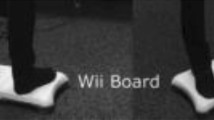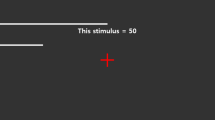Abstract
With the development of technology, the virtual reality (VR) headsets are widely accepted and used for leisure activities and training. However, research about the comfort of the VR headsets was rarely done. The study investigated the relationships between weight of VR headsets and subjective discomfort and pressure load on the head. One-way within-subject ANOVA was conducted to test statistical differences of subjective discomfort scores and pressure loads against weight. In all three types of VR headsets, the overall subjective discomfort and pressure loads are increasing with weight. Generally, the lower weight made users feel better when wearing VR devices. Meanwhile, the integrated head-wear headset felt more comfortable than the soft belts headset as a whole. Some suggestions about improving comfort of VR device is presented.
Access this chapter
Tax calculation will be finalised at checkout
Purchases are for personal use only
Similar content being viewed by others
References
Sutherland, I.E.: The ultimate display. In: Multimedia: From Wagner to Virtual Reality. Norton, New York (1956)
Chryssolouris, G., Mavrikios, D., Fragos, D., Karabatsou, V.: A virtual reality based experimentation, environment for the verification of human-related factors in assembly process. Robot. Comput. Integr. Manuf. 16(4), 267–276 (2000)
Statista: Virtual Reality Hardware Market Size Worldwide from 2016 to 2020 (2016). https://www.statista.com/statistics/550461/virtual-reality-market-size-worldwide/
Steed, A., Julier, S.: Design and implementation of an immersive virtual reality system based on a smartphone platform. In: 2013 IEEE Symposium on 3D User Interfaces (3DUI), pp. 43–46 (2013)
Li, X., Yi, W., Chi, H., Wang, X., Chan, A.: A critical review of virtual and augmented reality (VR/AR) applications in construction safety. Autom. Constr. 86, 150–162 (2018)
Innocenti, A.: Virtual reality experiments in economics. J. Behav. Exp. Econ. 69, 71–77 (2017)
Kim, H.K., Park, J., Choi, Y., Choe, M.: Virtual reality sickness questionnaire (VRSQ): motion sickness measurement index in a virtual reality environment. Appl. Ergon. 69, 66–73 (2018)
Chihara, T., Seo, A.: Evaluation of physical workload affected by mass and centre of mass of head-mounted display. Appl. Ergon. 68, 204–212 (2017)
Baber, C., Knight, J., Haniff, D., Cooper, L.: Ergonomics of wearable computers. Mob. Netw. Appl. 4(1), 15–21 (1999)
McCauley-Bell, P.R.: Ergonomics in virtual environments. In: Stanney, K.M. (ed.) Handbook of Virtual Environments, Design, Implementation, and Applications, pp. 807–826. Lawrence Erlbaum Associates, London (2002)
Melzer, J.E., Brozoski, F.T., Letowski, T.R., Harding, T.H., Rash, C.E.: Guidelines for HMD Design in Helmet-Mounted Displays: Sensation, Perception, and Cognition Issues, pp. 805–848. U.S. Army Aeromedical Research Laboratory, Fort Rucker, AL (2009)
LeClair, B., O’Connor, P., Podrucky, S., Lievers, W.B.: Measuring the mass and center of gravity of helmet systems for underground workers. Int. J. Ind. Ergon. 64, 23–30 (2018)
Chang, J., Jung, K., Kim, W., Moon, S.K., Freivalds, A., Simpson, T.W., Baik, S.P.: Effect of weight balance on a 3D TV shutter type glasses: subjective discomfort and physical contact load on the nose. Int. J. Ind. Ergon. 44(6), 801–809 (2014)
Acknowledgments
This research was support by the crucial technology exploration and application on ceramic 3D printing based on digital innovation design program and HW next generation virtual reality device study program through Hunan University.
Author information
Authors and Affiliations
Corresponding author
Editor information
Editors and Affiliations
Rights and permissions
Copyright information
© 2019 Springer International Publishing AG, part of Springer Nature
About this paper
Cite this paper
Yan, Y., Chen, K., Xie, Y., Song, Y., Liu, Y. (2019). The Effects of Weight on Comfort of Virtual Reality Devices. In: Rebelo, F., Soares, M. (eds) Advances in Ergonomics in Design. AHFE 2018. Advances in Intelligent Systems and Computing, vol 777. Springer, Cham. https://doi.org/10.1007/978-3-319-94706-8_27
Download citation
DOI: https://doi.org/10.1007/978-3-319-94706-8_27
Published:
Publisher Name: Springer, Cham
Print ISBN: 978-3-319-94705-1
Online ISBN: 978-3-319-94706-8
eBook Packages: EngineeringEngineering (R0)




